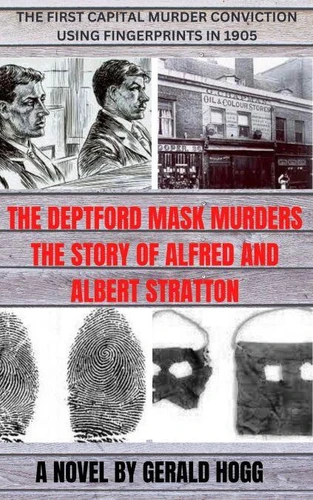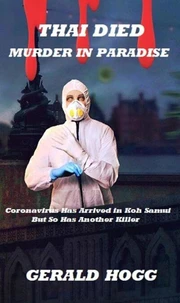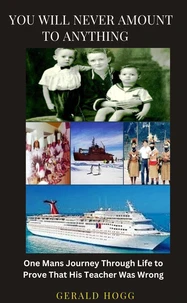The Deptford Mask Murders
Par :Formats :
Disponible dans votre compte client Decitre ou Furet du Nord dès validation de votre commande. Le format ePub est :
- Compatible avec une lecture sur My Vivlio (smartphone, tablette, ordinateur)
- Compatible avec une lecture sur liseuses Vivlio
- Pour les liseuses autres que Vivlio, vous devez utiliser le logiciel Adobe Digital Edition. Non compatible avec la lecture sur les liseuses Kindle, Remarkable et Sony
 , qui est-ce ?
, qui est-ce ?Notre partenaire de plateforme de lecture numérique où vous retrouverez l'ensemble de vos ebooks gratuitement
Pour en savoir plus sur nos ebooks, consultez notre aide en ligne ici
- FormatePub
- ISBN978-1-393-88240-4
- EAN9781393882404
- Date de parution29/04/2024
- Protection num.pas de protection
- Infos supplémentairesepub
- ÉditeurRelay Publishing
Résumé
This is the story of Alfred and Albert Stratton and how they came to be tried, convicted and hung because of the new forensic science of fingerprinting. The book is based on those true events and is my interpretation of what I believe could have happened 115 years ago when fingerprints were used for the very first time in Great Britain to convict the Stratton brothers of wilful murder. All of the main characters in this book who played their part in having the brothers convicted were real people in this extraordinary historical event.
In 1905 a crime took place in London that would change the way that police forces around the world would identify criminal suspects, the Deptford Mask Murders. On the 27th of March 1905, Thomas and Ann Farrow were found beaten to death in an oil and paint shop that they managed in Deptford. This was the crime that the Scotland Yard Fingerprint Bureau had been waiting for since the bureau was formed in 1901, a high profile crime that would put the spotlight on the science of fingerprinting as a reliable, efficient and infallible system of identifying criminals.
One week later Brothers Alfred and Albert Stratton were arrested and were later put on trial at the Old Bailey accused of wilful murder. The prosecution had very little evidence to convict the brothers and what they did have was mainly circumstantial, except for a thumbprint which was found on a cash box in the Farrows bedroom above the paint shop. Fingerprinting had never been used to solve a serious crime before in Britain and was often seen as being untrustworthy and untested, with one magistrate writing to The Times; "Scotland Yard, once known as the world's finest police organisation, will be the laughing stock of Europe it if insists on trying to trace criminals by odd ridges on their skins."
In 1905 a crime took place in London that would change the way that police forces around the world would identify criminal suspects, the Deptford Mask Murders. On the 27th of March 1905, Thomas and Ann Farrow were found beaten to death in an oil and paint shop that they managed in Deptford. This was the crime that the Scotland Yard Fingerprint Bureau had been waiting for since the bureau was formed in 1901, a high profile crime that would put the spotlight on the science of fingerprinting as a reliable, efficient and infallible system of identifying criminals.
One week later Brothers Alfred and Albert Stratton were arrested and were later put on trial at the Old Bailey accused of wilful murder. The prosecution had very little evidence to convict the brothers and what they did have was mainly circumstantial, except for a thumbprint which was found on a cash box in the Farrows bedroom above the paint shop. Fingerprinting had never been used to solve a serious crime before in Britain and was often seen as being untrustworthy and untested, with one magistrate writing to The Times; "Scotland Yard, once known as the world's finest police organisation, will be the laughing stock of Europe it if insists on trying to trace criminals by odd ridges on their skins."
This is the story of Alfred and Albert Stratton and how they came to be tried, convicted and hung because of the new forensic science of fingerprinting. The book is based on those true events and is my interpretation of what I believe could have happened 115 years ago when fingerprints were used for the very first time in Great Britain to convict the Stratton brothers of wilful murder. All of the main characters in this book who played their part in having the brothers convicted were real people in this extraordinary historical event.
In 1905 a crime took place in London that would change the way that police forces around the world would identify criminal suspects, the Deptford Mask Murders. On the 27th of March 1905, Thomas and Ann Farrow were found beaten to death in an oil and paint shop that they managed in Deptford. This was the crime that the Scotland Yard Fingerprint Bureau had been waiting for since the bureau was formed in 1901, a high profile crime that would put the spotlight on the science of fingerprinting as a reliable, efficient and infallible system of identifying criminals.
One week later Brothers Alfred and Albert Stratton were arrested and were later put on trial at the Old Bailey accused of wilful murder. The prosecution had very little evidence to convict the brothers and what they did have was mainly circumstantial, except for a thumbprint which was found on a cash box in the Farrows bedroom above the paint shop. Fingerprinting had never been used to solve a serious crime before in Britain and was often seen as being untrustworthy and untested, with one magistrate writing to The Times; "Scotland Yard, once known as the world's finest police organisation, will be the laughing stock of Europe it if insists on trying to trace criminals by odd ridges on their skins."
In 1905 a crime took place in London that would change the way that police forces around the world would identify criminal suspects, the Deptford Mask Murders. On the 27th of March 1905, Thomas and Ann Farrow were found beaten to death in an oil and paint shop that they managed in Deptford. This was the crime that the Scotland Yard Fingerprint Bureau had been waiting for since the bureau was formed in 1901, a high profile crime that would put the spotlight on the science of fingerprinting as a reliable, efficient and infallible system of identifying criminals.
One week later Brothers Alfred and Albert Stratton were arrested and were later put on trial at the Old Bailey accused of wilful murder. The prosecution had very little evidence to convict the brothers and what they did have was mainly circumstantial, except for a thumbprint which was found on a cash box in the Farrows bedroom above the paint shop. Fingerprinting had never been used to solve a serious crime before in Britain and was often seen as being untrustworthy and untested, with one magistrate writing to The Times; "Scotland Yard, once known as the world's finest police organisation, will be the laughing stock of Europe it if insists on trying to trace criminals by odd ridges on their skins."















